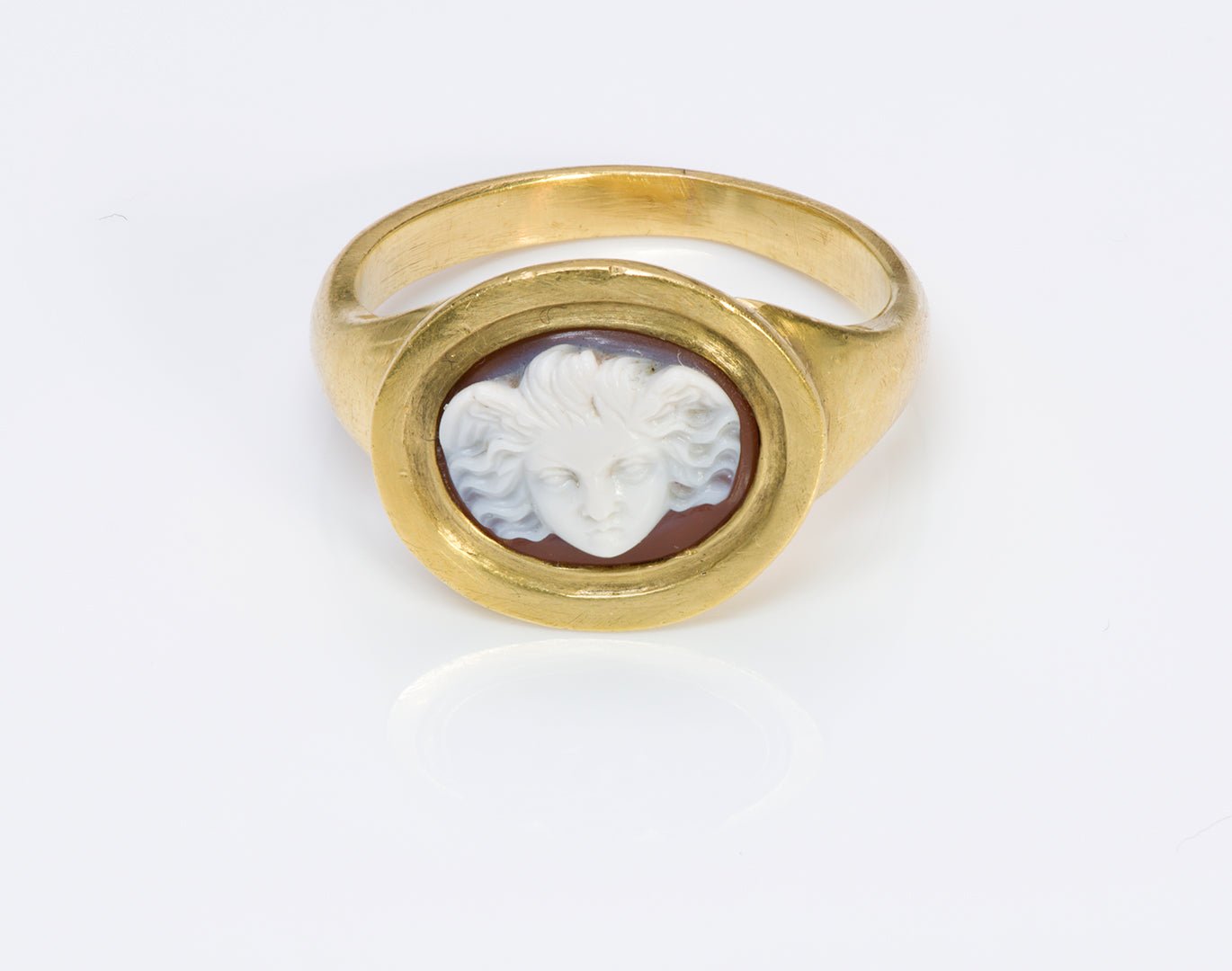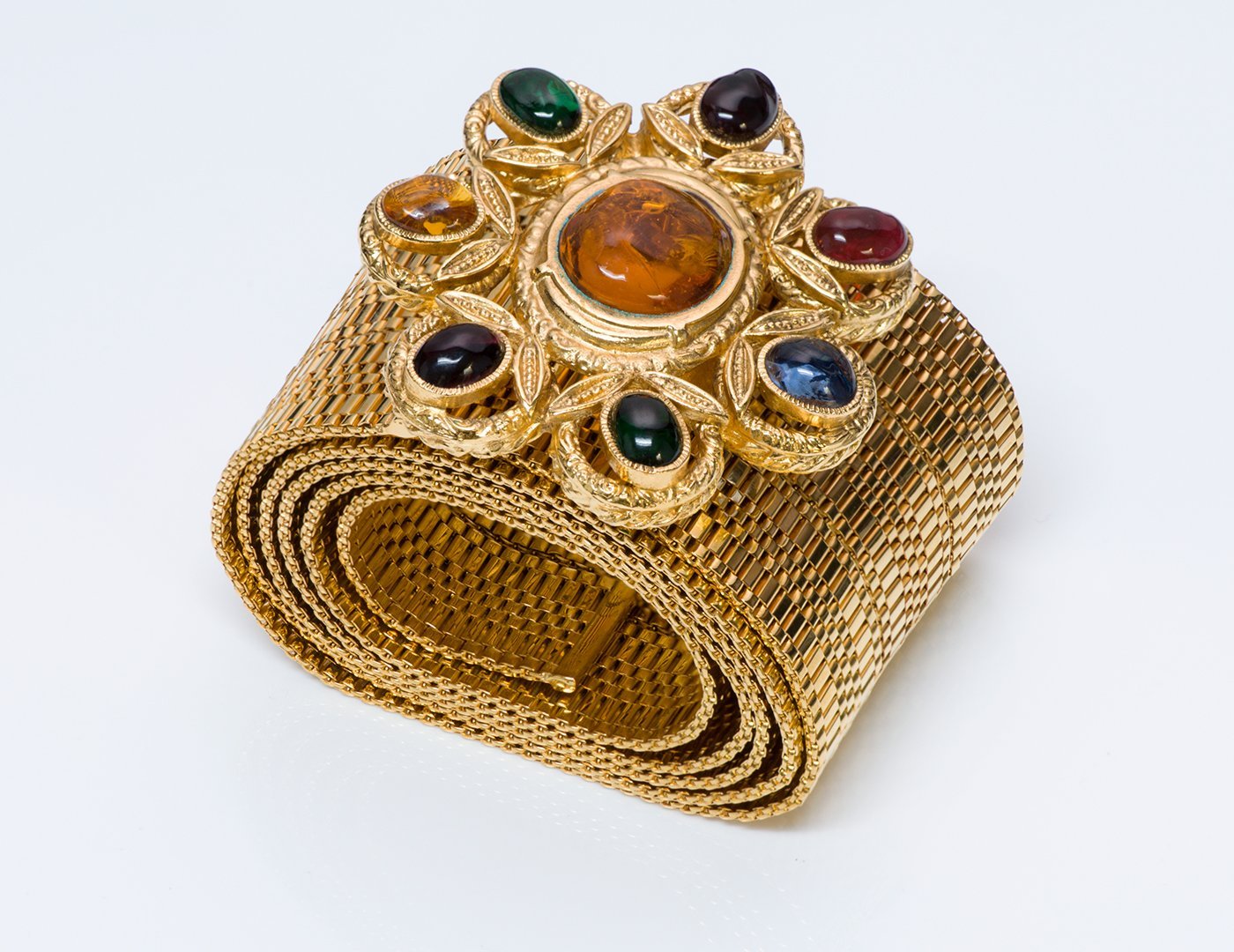
Rings and Their Ancient Long History
Rings appear in almost every culture of the world and have been in existence for over six thousand years serving a multitude of purposes and satisfying decorative, practical and symbolic needs. They have been used to seal correspondences, authenticate documents and, of course, to pledge one heart to another. Often rings have been used as symbolic expressions of faith, have served to memorialize friendships, honor those who have left us and as talismans providing protection against the forces of evil. Rings have also been used as tangible evidence of power and wealth. Miraculously, rings of all periods have survived providing valuable historical insight into various cultures and as a timeline of major design themes and materials.
ANCIENT AND CLASSICAL RINGS
Ancient Egyptians are known to have worn scarab rings, intricately carved from a variety of stones including carnelian, lapis, amethyst, turquoise and other, threaded simply by a silver or gold wire. They were often engraved on the flat side of the scarab with decorative hieroglyphs, protective symbols, or titles. Rings served not only as visible symbols of rank and power but as means to authenticate documents. Egyptians wore rings as signets or for religious and talismanic purposes rather than as mere decoration.
Scarab rings were also worn by the Greeks as well as engraved signet rings with motifs from nature and figures from mythology and literature. These were set with gems prized for their beauty, rarity and talismanic properties. The Greeks used rings as tokens of affection and love, frequently engraved with symbols depicting Eros or Aphrodite.
Antique 18th century hight karat gold ring mounted with ancient agate intaglio.
During the early Roman Republic, the first rings were made of iron and served as seals. The right to wear gold rings was at first permitted according to status, for example to senators, and only while serving as ambassadors of the Republic. In the later years of the Roman Empire, the right to wear gold rings was awarded to all civilians and both men and women came to wear heavy gold rings set with rare and costly gems displaying wealth and status. By the first century AD each finger might be laden with multiple adornments.
The custom of exchanging rings as tokens of betrothals is believed to have originated with the Romans. Wedding rings often featured the image of two right hands clasped in symbolic representation of marriage and was worn on the fourth finger of the left hand in the belief that this finger had a vein, the vena amoris that flowed directly to the heart. Another popular motif was the marriage knot or knot of Hercules, a simple and symbolic design of two intertwined ropes that is probably the origin of the phrase “tying the knot.”
Perhaps the ring style most associated with the Romans was the signet ring. Intaglios featuring the heads of lovers face to face were used in signet rings as marriage rings. Rings used to seal official documents had gemstone intaglios frequently engraved with the wearer’s portrait. Large, ornate signet rings were also worn for purely decorative purposes depicting aspects of everyday life, figures of gods and rulers and portraits of poets and philosophers.
RINGS OF THE MIDDLE AGES
In the Middle Ages hands were often heavily bejeweled with each finger, including the thumb, often adorned with several rings on different joints. Sometimes rings were threaded onto rosaries, attached to a hat, suspended by a cord or ribbon worn round the neck or tied around the arms. The most popular gemstones were sapphires, garnets, rubies, amethyst and rock crystal and to a lesser extent, diamonds.
By the mid-1300s in Europe, ring wearing was such a symbol of rank that laws were introduced in an attempt to regulate their wearing. Gold and silver rings set with precious jewels were to be reserved for royalty and nobility and base metals such as pewter, gilt bronze and the cooper alloy were reserved for those of more common origins.
By the fifteenth century settings had become more elaborate with a scalloped bezel surrounding the gem with a flower like outline often supported by more decorative shoulders. Designs such as scrollwork, leaves, flowers, and dragons were embellished with niello and enamel. Gemstones were picked for their talismanic properties, not only for their intrinsic value and beauty, and direct contact of the stone with the skin was believed to amplify these medicinal or amuletic benefits.
Ancient Intaglio set antique gold ring.
Signet rings were used extensively during the Middle Ages and intaglios carved by the ancient Roman and Greek craftsmen were particularly prized spurring a revival in the craft of hardstone carving in the 13th century. Bezel and hoops were frequently engraved with the owner’s name and various phrases in Latin or French. By the 15th century heraldic signets displaying coats of arms and other insignia were widely worn by all who were entitled to do so. A notable enhancement was the foiled crystal insignia which had a brightly colored coat of arms painted underneath the engraved crystal keeping the colors intact when pressed into wax.
In the Middle Ages the flowering of chivalry and courtly love meant rings of friendship and love were popular inscribed with sentiments of affection The fashionable posey ring, a hoop of gold with a short poem, a “poesie”, inscribed on the band in either Latin or more typically in French, the language of romance, was a favourite. The poesy ring was decorated with simple enameled designs of leaves, flowers and teardrops, expressive of tender emotions, and with phrases such as mon cuer avez (you have my heart), due tout mon couer (with all my heart), and amor vinicit omnia (love conquers all).
Other popular rings of sentiment during this era were the gimmel ring (from the Latin gemellus for twin) made of entwined double or triple hoops representing the bonds of friendship and love, and the Jewish marriage ring, a richly enameled and filigreed gold ring sometimes featuring miniature houses symbolizing the nuptial home or the Temple of Jerusalem. These rings were often reserved for symbolic use during the marriage ceremony.
RINGS OF THE RENAISSANCE
Gold work during the Renaissance reached new levels of craftsmanship and design. The jeweler’s bench was considered the best training ground to achieve the depth of detail and precision that characterized the eras most accomplished artists such as the painter and sculptor Donatello, the painter Botticelli and the sculptor Benvenuto Cellini who trained as goldsmiths. Sculpture and painting influenced jewellers and rings were often decorated in arabesque motifs with sculptured shoulders of figural and floral designs and extravagantly enameled in increasingly sophisticated techniques including en ronde bosse.
Another innovation was the hinged ring containing compartments for scented materials, a particularly useful design in counteracting the daily olfactory assaults of this period. For those who could afford them, colored stones remained popular, the most desired being ruby, sapphire, and emerald. The high fashion of the late Renaissance included elaborate neck ruffs, large padded sleeves and cuffs, and limited the forms of jewelry that could be worn. Rings, on the other hand, were unencumbered by these fashions and could be freely enjoyed.
Highly decorative Renaissance signet rings featured portrait intaglios of contemporary European rulers such as Henry VIII of England and of Roman emperors. They were greatly prized. These were either newly carved by masterful artists or preserved from antiquity and set in highly sculpted and enameled settings. Heraldic signet rings were much treasured as heirlooms representing family lineage and bloodlines. The bloodstone was deemed a particularly appropriate gemstone for this purpose and set in simpler more functional settings. Signet rings featuring the marks of guilds or merchants were plainer and designed more for heavy use. More elaborately designed initial rings were also popular with the initials linked by knots or forget me not flowers and were sometimes given as marriage rings with the betrothed’s initials entwined together.
Early angel cameo set in 18K yellow gold antique mount ring.
Love and friendship rings depicted Cupid with his bow and arrow and more unusual was that of a stag eating dittany, a herb that was believed to cure wounds, including those caused by love’s arrow. The posy ring remained popular with its inscriptions, increasingly in roman capitals, hidden inside the band and was used as both a token of love and as a wedding band.
Reminders of impending mortality have long been a theme in jewelry, particularly in rings. In the ancient world, such symbols as skeletons, skulls and figures of cupid holding were commonly used. Mottos relating to the transient nature of life and its fleeting pleasures usually accompanied the imagery. The Middle Ages infused memento mori themes with an emphasis on living a just and moral life in anticipation of divine judgment. This continued into the Renaissance and rings were decorated with coffins, skeletons, hourglasses and skulls and the memento mori themes were also used in signet rings.




















